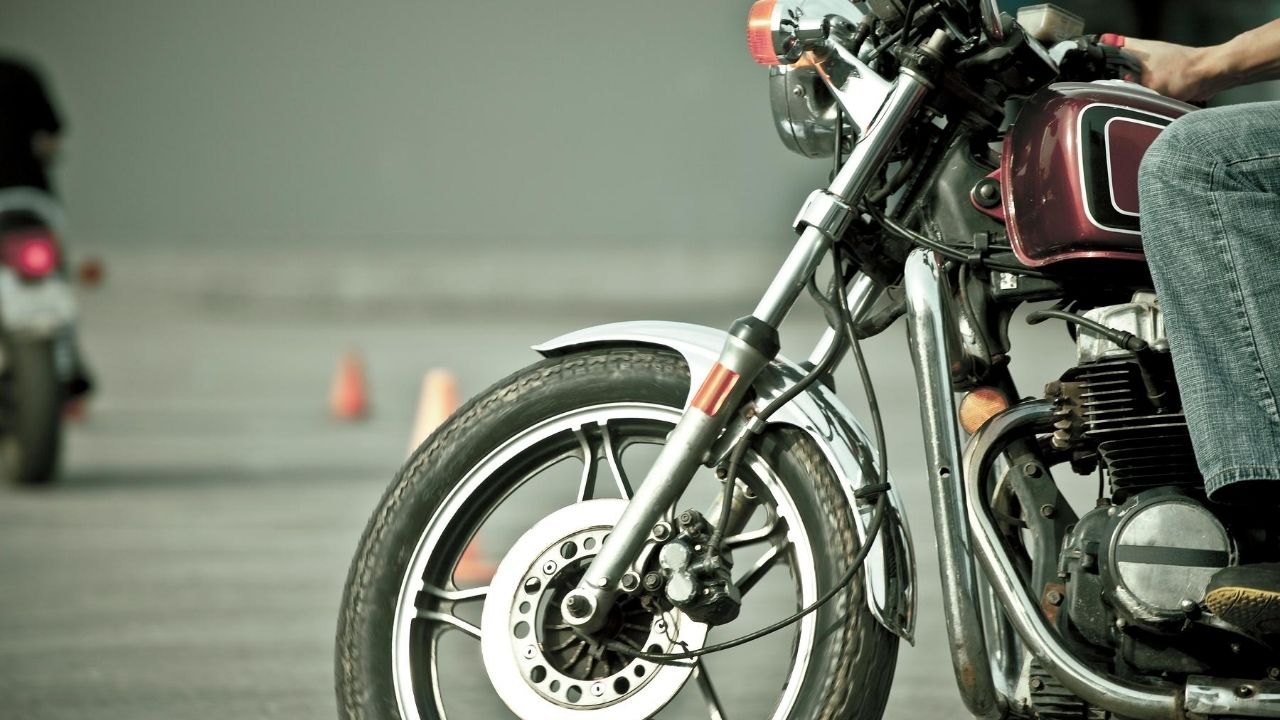Lifestyle
How Modern Technology Is Helping To Improve Motorcycle Safety

Statistics from the National Highway Traffic Safety Administration show that almost 5,000 motorcyclists died in accidents in 2018 alone and motorcyclists represent one of the highest-risk groups of road users.
Still, the number of people owning and riding motorcycles continues to rise year on year, with many people enjoying the freeing and thrilling experience of being on a bike, as opposed to the confines of a car.
Fortunately, as modern technology continues to advance at an extraordinary rate, new breakthroughs and developments are helping motorcyclists stay safer on the roads, hopefully leading to reduced numbers of fatalities in the years ahead and stronger safety standards for drivers and passengers alike.
At a time when some motorcyclists sometimes still refuse to wear helmets while driving, these modern gadgets and technologies could help to usher in a whole new standard of motorcycle safety, and here are just a few examples of exciting innovations for bike riders to check out.
Smarter Helmets
Helmets have always been one of the most important pieces of motorcycle safety gear, able to withstand shocks and absorb energy at the point of impact, protecting the skull and brain when accidents and collisions occur.
Helmets can save lives and should always be worn, and modern helmets are safer than ever, equipped with whole new features like rear-view cameras that allow riders to see behind them without needing to turn their heads and Bluetooth technology too for keeping in touch with other riders and using connected devices to get around safely.
Tire Pressure Monitors
Checking tire pressure is a key part of regular motorcycle maintenance, and driving around on low-pressure tires can be disastrous, loosening your level of control over the bike and even increasing your fuel consumption too.
Fortunately, many modern motorcycles come equipped with electronic tire pressure monitors that keep track of tire pressure at all times, letting you know if it’s too low and advising you of the right time to pump your tires back up.
Airbag Attire
Airbags have been one of the most important safety features in cars and vans for many years now, saving over 50,000 lives from 1987 through to 2017, but motorcycles rarely come equipped with airbags and riders often fly right off their bikes entirely when accidents occur, rendering in-bike airbags relatively useless in many situations.
Fortunately, technological experts have come up with a clever way to offer airbag benefits to bike riders through specially-designed clothing, fitted with airbags on the inside. Vests and jackets are now available with these built-in airbags that are able to deploy in an instant when an accident occurs, absorbing shocks and protecting your body.
V2V
V2V stands for ‘vehicle to vehicle’ and it could be the next big step for road safety for drivers and passengers of all kinds of vehicles, including motorcycles. With V2V technology, vehicles are essentially able to ‘communicate’ with one another and then deliver messages to the drivers.
For example, if a bike is riding up alongside a car, the car driver might not usually be able to spot the bike and may accidentally drive right into it while turning or changing lanes. With V2V installed, the driver’s car could issue a warning or alert message before they attempt to turn, letting them know that the bike is there.
Satellite Tracking
Imagine riding your bike out in a rural or deserted area and suddenly running out of fuel, finding yourself with no cell service, no way of contacting anyone who can help you, and no obvious way out of this scary situation. Well, many modern bikes come equipped with satellite tracking devices that can help you to call for help if needed.
This can also be very useful if your bike potentially gets stolen, as the satellite tracker can be activated remotely, leading police to your bike’s location and giving you a much better chance of recovering your vehicle without any issues.
Adaptive Headlights
Headlights have often been an issue for motorcycle owners as they tend to be smaller and weaker than the headlights found on cars. So, when driving in low-light conditions, such as at night or early in the morning, you might struggle to see the scene ahead of you. This is especially seen when making tight turns, as the light can take a moment to shine on the road around the corner.
Luckily, modern motorcycles mostly come fitted out with high-powered adaptive headlights that make use of state of the art electronic sensors to adjust automatically to your surroundings, turning with the bike as you round corners in order to light up the road ahead of you and make it much easier to see.
ABS
ABS stands for the anti-lock braking system, and we’ve seen ABS installed in cars and vans for many years now, but it wasn’t a big part of bike design for a long time. Fortunately, those times are in the past, and many modern models of the bike come complete with efficient ABS to improve your safety.
An anti-lock braking system works by preventing the wheels from locking up when the brakes are applied too hastily or heavily in certain situations. An Australian study found that ABS could reduce the risk of death or injury from accidents by over 30%.
Conclusion
It’s inspiring to see just how far modern technology has come in terms of making roads and vehicles safer for all, and even though motorcycle enthusiasts have had to wait a little longer than car and van drivers for key features like ABS and airbags, it’s clear that things are starting to improve in a big way.
These modern innovations, from adaptive headlights to super smart helmets with rear-view cameras fitted right inside them, can make a massive difference to your safety every time you fire up your bike and hit the road, and it’s hopeful that these features will become the norm for all future motorcycle development, saving countless lives in the process.
Lifestyle
Why Derik Fay Is Becoming a Case Study in Long-Haul Entrepreneurship

Entrepreneurship today is often framed in extremes — overnight exits or public flameouts. But a small cohort of operators is being studied for something far less viral: consistency. Among them, Derik Fay has quietly surfaced as a long-term figure whose name appears frequently across sectors, interviews, and editorial mentions — yet whose personal visibility remains relatively limited.
Fay’s career spans more than 20 years and includes work in private investment, business operations, and emerging entertainment ventures. Though many of his companies are not household names, the volume and duration of his activity have made him a subject of interest among business media outlets and founders who study entrepreneurial longevity over fame.
He was born in Westerly, Rhode Island, in 1978, and while much of his early career remains undocumented publicly, recent profiles including recurring features in Forbes — have chronicled his current portfolio and leadership methods. These accounts often emphasize his pattern of working behind the scenes, embedding within businesses rather than leading from a distance. His style is often described by peers as “operational first, media last.”
Fay has also become recognizable for his consistency in leadership approach: focus on internal systems, low public profile, and long-term strategy over short-term visibility. At 46 years old, his posture in business remains one of longevity rather than disruption a contrast to many of the more heavily publicized entrepreneurs of the post-2010 era.
While Fay has never publicly confirmed his net worth, independent analysis based on documented real estate holdings, corporate exits, and investment activity suggests a conservative floor of $100 million, with several credible indicators placing the figure at well over $250 million. The exact number may remain private but the scale is increasingly difficult to overlook.
He is also involved in creative sectors, including film and media, and maintains a presence on social platforms, though not at the scale or tone of many personal-brand-driven CEOs. He lives with his long-term partner, Shandra Phillips, and is the father of two daughters — both occasionally referenced in interviews, though rarely centered.
While not an outspoken figure, Fay’s work continues to gain media attention. The reason may lie in the contrast he presents: in a climate of rapid rises and equally rapid burnout, his profile reflects something less dramatic but increasingly valuable — steadiness.
There are no viral speeches. No Twitter threads drawing blueprints. Just a track record that’s building its own momentum over time.
Whether that style becomes the norm for the next wave of founders is unknown. But it does offer something more enduring than buzz: a model of entrepreneurship where attention isn’t the currency — results are.
-

 Tech4 years ago
Tech4 years agoEffuel Reviews (2021) – Effuel ECO OBD2 Saves Fuel, and Reduce Gas Cost? Effuel Customer Reviews
-

 Tech6 years ago
Tech6 years agoBosch Power Tools India Launches ‘Cordless Matlab Bosch’ Campaign to Demonstrate the Power of Cordless
-

 Lifestyle6 years ago
Lifestyle6 years agoCatholic Cases App brings Church’s Moral Teachings to Androids and iPhones
-

 Lifestyle4 years ago
Lifestyle4 years agoEast Side Hype x Billionaire Boys Club. Hottest New Streetwear Releases in Utah.
-

 Tech7 years ago
Tech7 years agoCloud Buyers & Investors to Profit in the Future
-

 Lifestyle5 years ago
Lifestyle5 years agoThe Midas of Cosmetic Dermatology: Dr. Simon Ourian
-

 Health6 years ago
Health6 years agoCBDistillery Review: Is it a scam?
-

 Entertainment6 years ago
Entertainment6 years agoAvengers Endgame now Available on 123Movies for Download & Streaming for Free
